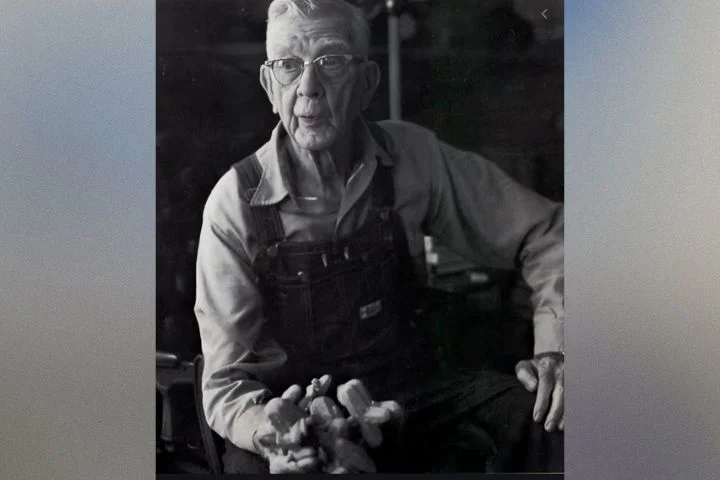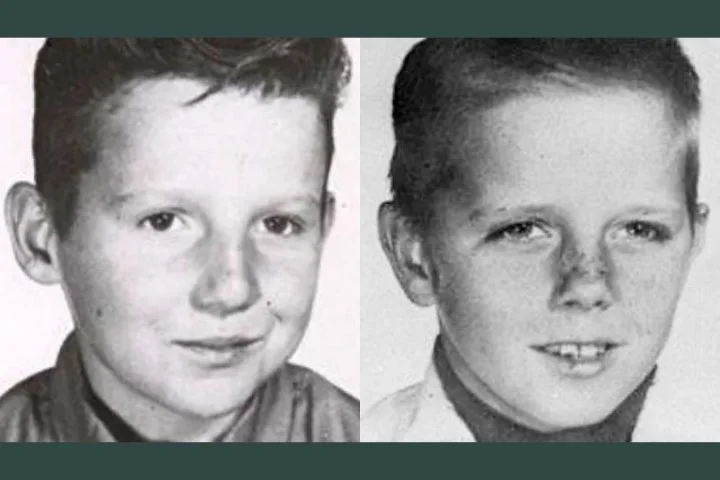On April 29, 1981, 84-year-old, Reverend Maurice “Doc” Dametz went on a trip with a friend, David McSherry, to find Topaz near the Topaz Point picnic area, Devil’s Head, Colorado, in the Pike National Forest.
He was last seen rock hunting near Rampart Range Road, in Douglas County, and his friend was no more than 50 yards away. David checked on Maurice and told him they were returning home, and 15 minutes later, he returned to take him to the car. But he had vanished. He has not been seen since, and nothing has ever been found despite the passing of many decades.

Who was Reverend Doc Dametz?
Reverend Dametz was born in Blue Rapids, Kansas, on June 24, 1896. On June 1, 1930, he married Myrtle Lucille Goodier in LaPorte. He had one daughter, Martha Ann and lived in Longmont, Colorado.
Doc began his education at Hastings College in Hastings, Nebraska, then studied at Denver Bible College. He received a P.H.T. from the Presbyterian Theological Seminary in Omaha, Nebraska. He studied at the National Bible College of Wichita, Kansas, and got a Master’s Degree at the University of Denver and later a D.D. from Rockmont College in Denver.
He was the associate editor of the Grace and Truth magazine from 1923 to 1943 and was editor from 1944 to 1948. He was editor of the Rockmont Review from 1950 to 1955 and contributing editor of the Christian Victory magazine from 1948 until 1981. He served on the Longmont Chamber of Commerce, was the Denver Bible College Board of Trustees Chairman from 1943 to 1947, and was President of Rockmont College Alumni Association from 1955 to 1958.
Dametz was keenly interested in gems and minerals and was a member of the American Federation of Mineral Societies and Flatirons Gem and Mineral Club.
The Reverend Dametz was also an author, writing “D*ead at the Top,” “Focal Points of Christian History,” “Burden Bearing,” “Trouble Transformed,” “Mystery of Godliness”, and numerous articles in leading religious periodicals.
Dametz had arthritis and a blood disorder. He often went rock hunting with a friend, who would assist him in moving around to his dig sites as he could not walk well on his own.
About the Pike National Forest and Rampart Range Road
The Pike National Forest is located in the Front Range of Colorado, west of Colorado Springs, including Pikes Peak and is named after American explorer Zebulon Pike. The forest encompasses 1,106,604 acres (4,478 km²) within Clear Creek, Teller, Park, Jefferson, Douglas and El Paso counties. Rampart Reservoir, a large artificial body of water, is located within the forest. Much of the bedrock within Pike National Forest is made up of coarse, pink-to-orange Pikes Peak granite.
Rampart Range Road is a 38.4-mile-long unpaved road that travels through the forested crest of the Rampart Range. The scenic gravel road has spectacular views of Pikes Peak, the prairie, the rugged Front Range and the Tarryall Mountains. It offers quiet camping, diverse mountain biking and camping opportunities, and one of Colorado’s last fire lookouts on top of Devil’s Head. The Civil Conservation Corps built the road during the Great Depression of the 1930s. The Lookout Tower is a historic landmark, built in 1912, and is on the National Register of Historic Places. The first woman Fire Ranger, Helen Rowe, worked there from 1919 to 1921 and reported 16 fires.
On top of the Lookout Tower is a 100-mile panoramic view in every direction. To the south, there is Pikes Peak; to the west, you can see the Continental Divide and peaks near Leadville. To the north, you can see the Boulder Flatirons and Rocky Mountain National Park; to the east, you can see Eagle Mountain and Larkspur.
The Dametz disappearance
On April 29, 1981, Maurice wore a white baseball cap, a maroon plaid flannel shirt, and brown ankle-high work boots. Since he was in poor health, he needed help from McSherry to get to his digging spot, a small sandy pit close to the Rampart Range Road.
McSherry left Dametz and found his own spot to dig about 50 yards (45 metres/150 ft) away. After about two hours, at around 3 pm, McSherry walked over to Dametz to let him know that it was time to drive home, and then he returned to his own pit to clean up the tools and collect the stones. When he returned to Dametz’s spot only fifteen minutes later, Doc was gone! Crucially, there was also no sign of the tools he had been using to dig holes in the ground. It was as if someone or something had taken Doc and his tools.
Surprised that Dametz could make it up the hill alone, he checked back at their car, waited, and honked the horn a few times, but there was no response; Dametz was nowhere to be found. The site where Maurice was last seen was not disturbed, besides the small pit he dug to find the Topaz. Crucially, there were no signs of a struggle in the dirt, and no blood was present, indicating that a wild animal had not attacked the Reverend.
The search for Doc Dametz
McSherry flagged down a motorist on Rampart Range Road. By 11 pm that night, the Douglas County Sheriff had been notified, and SAR teams were at the scene. The area was scoured by searchers using grid patterns for the following five days with no sign of Dametz. The search dogs could not even pick up a scent. He had vanished.
On July 18, 1981, Maurice’s wife, Myrtle, wrote to Governor Richard Lamm asking for further assistance in finding him, saying that she believed Maurice may have met foul play or been carried out of the area. She requested a more extensive investigation of his disappearance. But nothing was ever discovered, and Maurice was officially declared de*ad in 1990 after being missing for nine years.
What happened to the Reverend Dametz?
There was no sign of a struggle, no blood and no cries for help, which suggests he was not ab*ducted or k*illed by a wild animal. His tools went missing with him.
Perhaps he decided to wander off to relieve himself or to lose himself in nature. Given his medical condition, he could not have possibly made it far, but given the terrain, he could have easily gotten stuck somewhere or hidden in the case of suicide. He may have wandered off looking for a better dig site, or, knowing he was at the end of his life, may have gone into the forest to spend his final moments in the wilderness.
Is it possible that Dametz was never in the area that day? Did McSherry fabricate the story to cover up his mur*der or offer assisted suicide? If Doc was mu*rdered by his friend David, what would have been the motive? Perhaps a giant topaz find? Dametz was a devout Christian and former pastor, so suicide seems unlikely.






